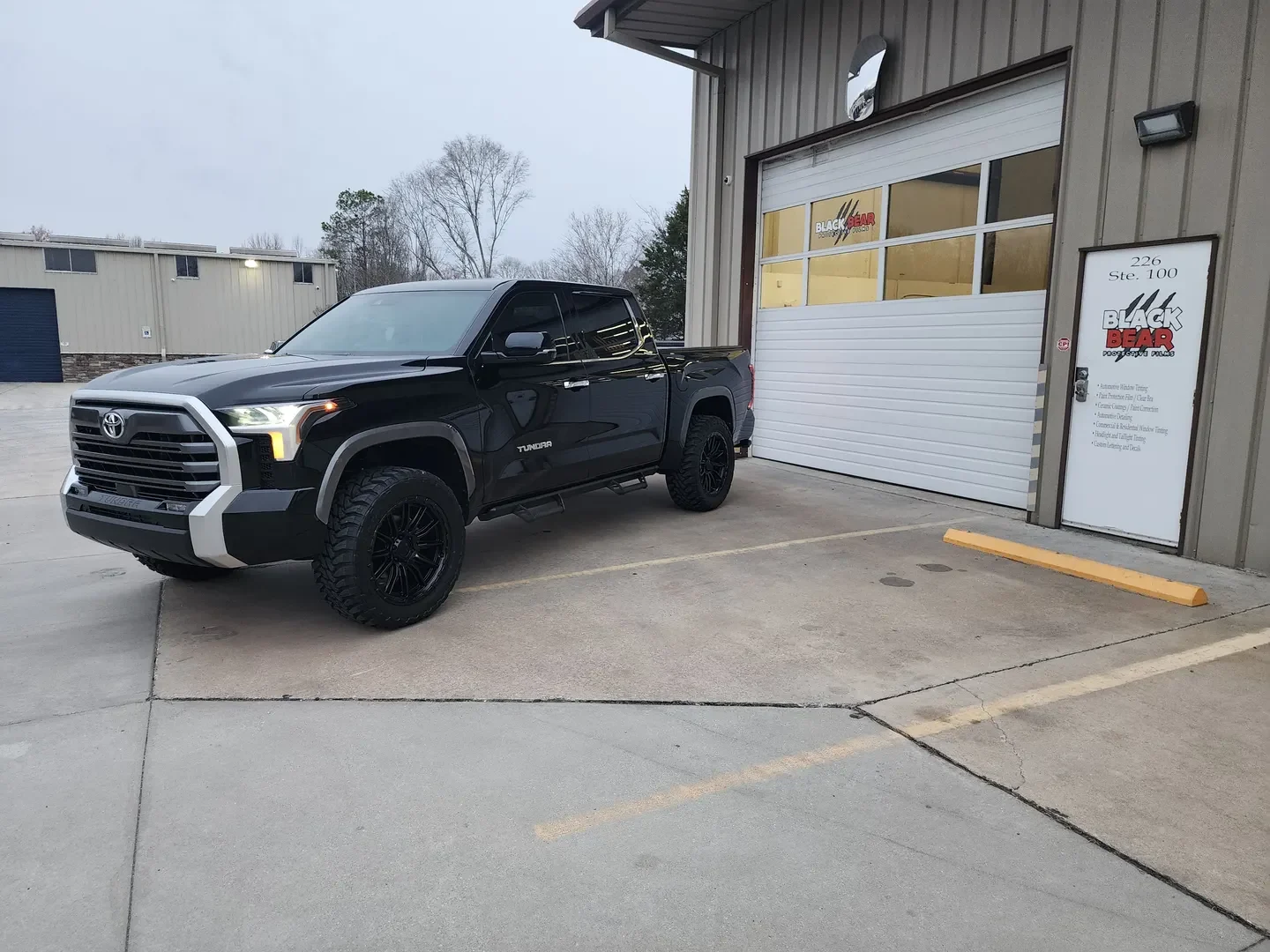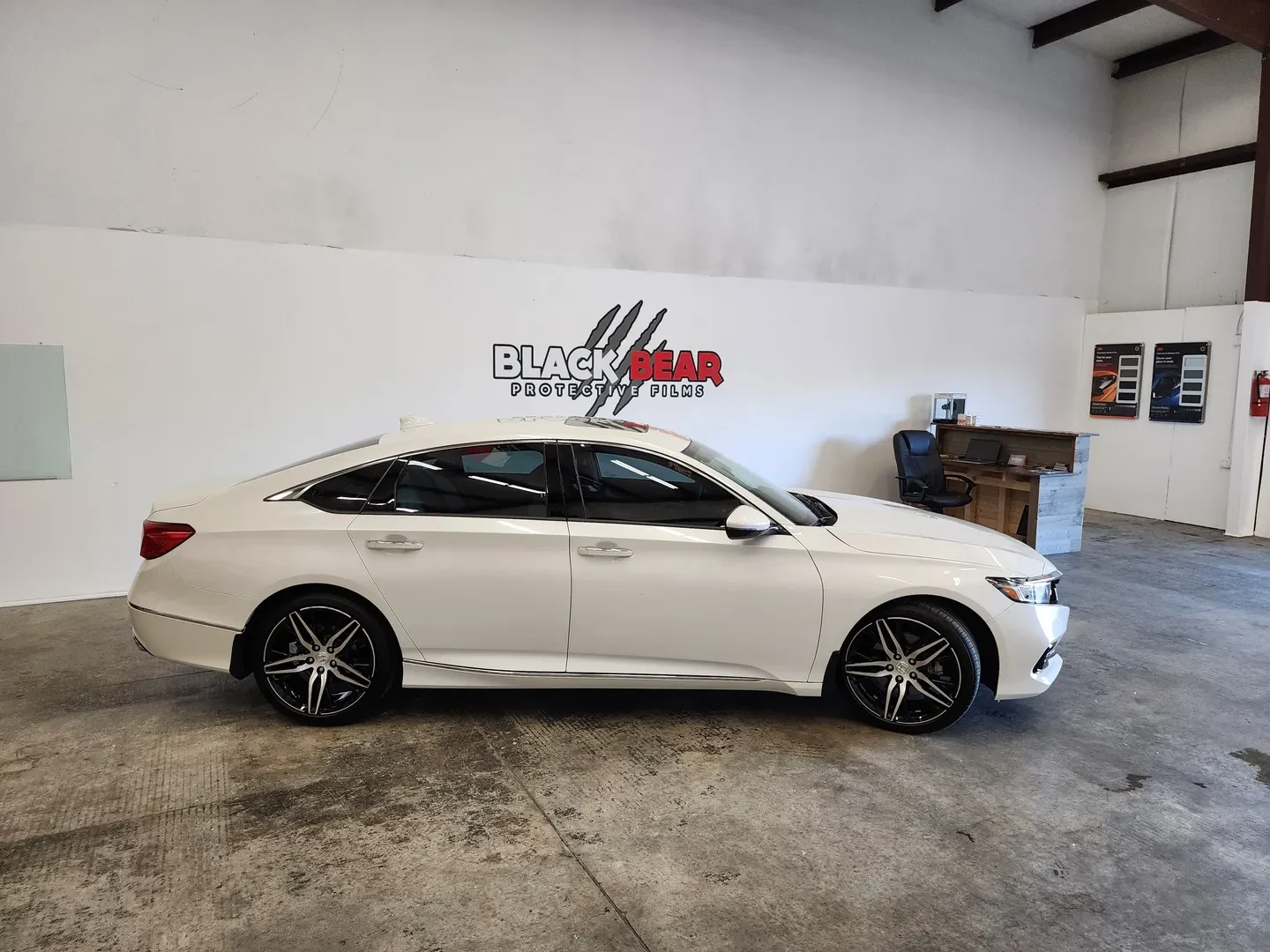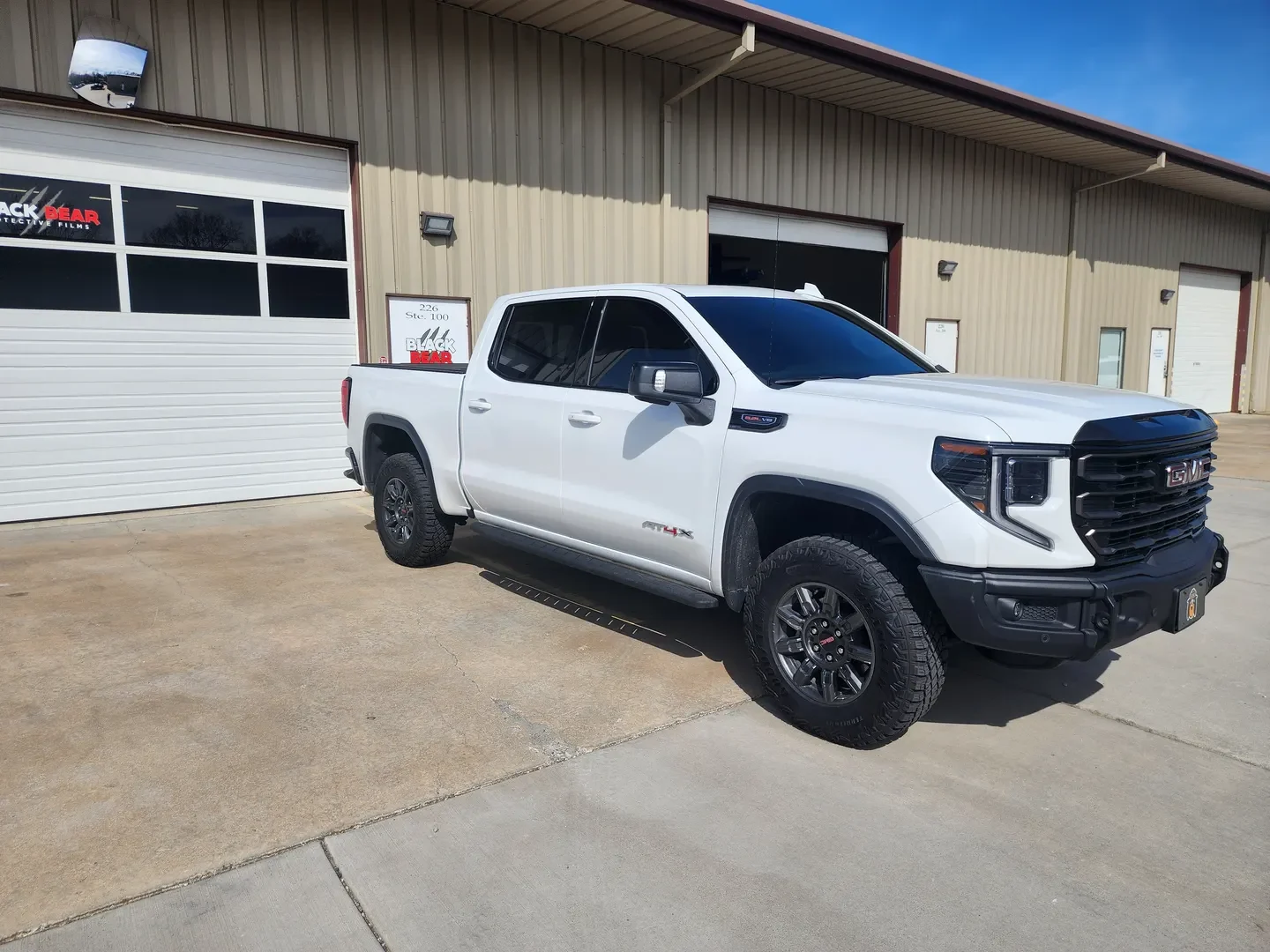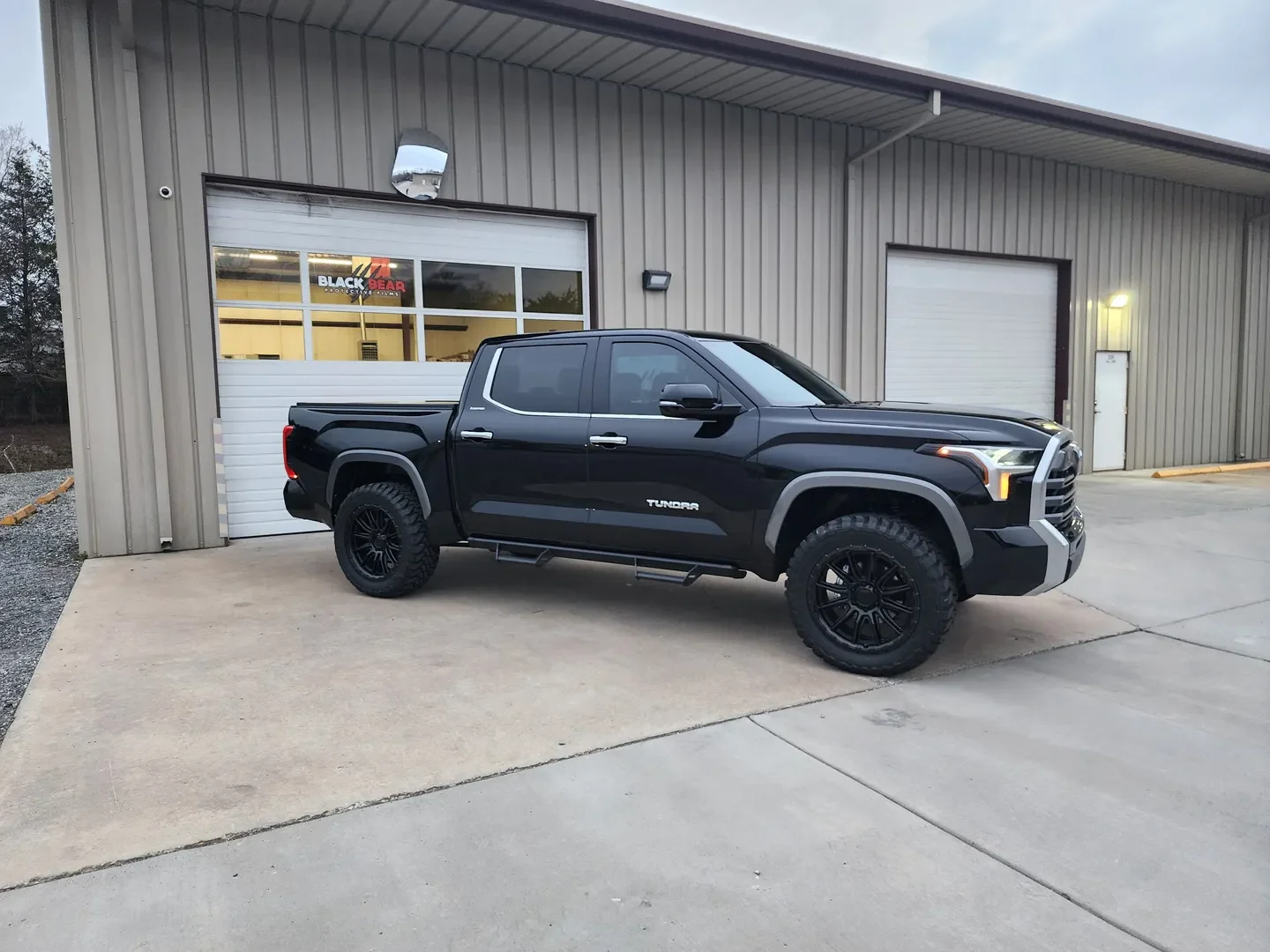Whether you’re aiming for style, privacy, UV protection, or cooler interiors, window tinting is one of the most effective upgrades you can make to your vehicle. But not all tint are created equal. In this guide, we’ll unpack what automotive window tinting is all about and explore the different types of window tinting films available—each with unique benefits.
Let’s dive into the world of car window tinting and help you find the right fit for your vehicle, budget, and lifestyle.
Understanding Window Tinting: What It Really Means
Window tinting refers to applying a thin, transparent film to the inside of a vehicle’s windows. These films are engineered to reduce glare, block UV rays, improve privacy, and even add a layer of security to your car. Depending on the type of tint, it can also help regulate interior temperatures by rejecting solar heat.
Think of it as sunglasses for your car—but with way more benefits. From everyday sedans to luxury rides, automotive tinting adds both functional and aesthetic value that enhances your overall driving experience.
Why People Choose Car Window Tinting
There are plenty of solid reasons why car window tinting is such a popular choice among vehicle owners. Here’s a closer look at what motivates most drivers:
- UV Protection: Harmful UV rays can cause skin damage and fade your car’s interior. Quality tint blocks up to 99% of these rays.
- Heat Rejection: Tint can dramatically reduce interior temperatures, especially in hot climates, keeping your car cooler and more comfortable.
- Enhanced Privacy: Tinted windows provide a visual barrier, deterring prying eyes and potential thieves.
- Shatter Resistance: In the event of a break-in or accident, the film helps hold shattered glass together, improving safety.
- Sleek Appearance: Let’s face it—tinted windows just look sharp. They give your ride a sleek, refined, and often sporty edge.
From daily drivers to high-performance vehicles, vehicle window tinting delivers real benefits that extend far beyond looks.
Types of Window Tinting Films
When it comes to selecting the right window tint, there’s no one-size-fits-all answer. Different types of window tinting films cater to different needs—some prioritize UV blocking, others emphasize clarity or durability. Let’s break down the four most common types:
Carbon Window Tint Film
Carbon tint is a favorite among drivers who want performance without metallic interference. It’s crafted with carbon particles that effectively block infrared light, significantly reducing heat and keeping the cabin cool.
- Non-reflective and matte finish: Carbon films give your windows a clean, non-shiny look.
- Excellent UV and heat rejection: Keeps interiors protected and reduces AC load.
- Won’t fade over time: Unlike dyed tint, carbon films are more durable and color-stable.
Perfect for those looking for automotive window tinting that’s both efficient and stylish, carbon is a smart mid-range option.
Ceramic Window Tint Film
If you’re after top-tier performance, ceramic tint is the gold standard in the world of auto window tinting. These films are made using non-metallic, non-conductive ceramic particles that offer incredible clarity and protection.
- Highest heat and UV rejection: Up to 99% UV blocking and substantial infrared rejection.
- No signal interference: Unlike metalized tint, ceramic won’t affect cell signals, GPS, or radio.
- Scratch-resistant and durable: Designed to last for years without bubbling or discoloration.
Though pricier, ceramic car window tinting is ideal for luxury cars, high-end performance vehicles, or anyone who refuses to compromise on quality.
Dyed Window Tint Film
Looking for a cost-effective way to upgrade your car’s appearance? Dyed tint film is your go-to choice. This basic tint uses multiple layers of dye to absorb solar heat and reduce light transmission.
- Budget-friendly option: Ideal for drivers looking for aesthetics over performance.
- Moderate UV and heat reduction: Not as effective as ceramic or carbon but still provides comfort.
- Rich, dark appearance: Offers privacy and style with a deep, uniform color.
Just keep in mind that dyed films can fade over time and may require replacement sooner than premium options.
Metalized Window Tint Film
Metalized films use a thin layer of metal particles to reflect sunlight and block heat. They give a shiny, reflective look and offer superior durability.
- Strong heat rejection: Reflects UV and infrared rays to maintain cooler interiors.
- Enhanced strength: Adds a layer of shatter resistance to windows.
- Long-lasting: Metalized films are durable and scratch-resistant.
However, one drawback is that metalized car tinting can interfere with electronic signals, making it less ideal for drivers who rely heavily on mobile tech.
How to Choose the Right Window Tint for Your Car
So, which tint is right for you? Here are some things to consider:
- Budget: Dyed tint are economical, while ceramic is a high-end investment.
- Purpose: Want privacy, heat rejection, or UV protection? Pick based on your top priority.
- Technology Use: Avoid metalized tint if you depend on GPS, radios, or keyless entry.
- Aesthetic Preference: Some people love the glossy look of metalized films, while others prefer the matte finish of carbon.
If you’re still unsure, companies like Black Bear Protective Films can guide you through the decision based on your driving habits, car model, and local climate.
Is Window Tinting Legal? Know Your Local Laws
Before you tint those windows, it’s crucial to check your state’s laws. Different states have different regulations regarding:
- Visible Light Transmission (VLT%): The amount of light allowed through your windows.
- Tint darkness for front vs. rear windows
- Reflectivity limits
- Medical exemptions
In both North Carolina Law and South Carolina Law, regulations typically allow a certain percentage of tint, especially on rear windows. Always verify with your installer—or better yet, let a professional like Black Bear Protective Films handle it, as they stay updated with local laws to ensure compliance.
Professional vs. DIY Window Tinting
Sure, DIY kits are cheaper—but they also come with risks. Here’s how professional window tinting stacks up:
Pros of Professional Tinting:
- Precise, bubble-free installation
- Access to premium film options
- Warranty coverage
- Legal compliance guidance
Cons of DIY Tinting:
- Risk of air bubbles or poor adhesion
- Less durable materials
- Limited warranties (if any)
- Potential legal violations
Bottom line? If you want your automotive tinting to look sharp and last long, go with the pros.
Benefits of Professional Window Tinting from Black Bear Protective Films
Working with experts like Black Bear Protective Films guarantees quality and peace of mind. Here’s why customers trust them:
- Factory-trained installers
- Industry-leading window films
- Lifetime warranties on select films
- Personalized recommendations
- Clean, dust-free installations
They don’t just stick film on your windows—they craft a solution that fits your needs and enhances your driving experience.
Window Tint Maintenance Tips
Once your tint is installed, a little care goes a long way:
- Wait before cleaning: Let it cure for 3–5 days before touching it.
- Use gentle cleaners: No ammonia-based products—go for water and mild soap.
- Soft cloth only: Microfiber towels help you avoid scratching the film.
- Avoid sharp objects: Keys, rings, and rough edges can damage the film.
With proper maintenance, a professionally applied auto window tint can last over a decade.
Final Thoughts: Which Tint Will You Choose?
At the end of the day, your car is more than just a ride—it’s an extension of your lifestyle. Whether you’re after sun protection, improved aesthetics, or interior preservation, the right car window tinting solution is out there waiting for you.
From ceramic to carbon and beyond, there’s a tint film for every budget and goal. And when you’re ready to elevate your driving experience, trusted professionals like Black Bear Protective Films are here to get the job done right—clean, legal, and durable.
FAQs About Window Tinting and Film Types
Q1: Which window tint is best for heat rejection?
A: Ceramic window tint is the best for heat rejection, blocking up to 80–90% of infrared rays. It keeps your car significantly cooler, especially in sunny climates.
Q2: Is ceramic tint worth the higher cost?
A: Yes, ceramic tint is more expensive but offers top-notch UV and heat protection, signal clarity, and longevity. It’s a great long-term investment for your vehicle.
Q3: Will tinted windows affect my visibility at night?
A: It depends on the VLT percentage. Darker tint can reduce visibility at night, but quality films like ceramic and carbon maintain clarity even in low light.
Q4: How long does car window tinting last?
A: Professional tint like ceramic or metalized films can last 10+ years with proper care. Dyed films usually last around 3–5 years before fading.
Q5: Can I remove or replace window tint later?
A: Absolutely! Tint can be safely removed or replaced by professionals like Black Bear Protective Films, especially when it’s time to upgrade or switch styles.




